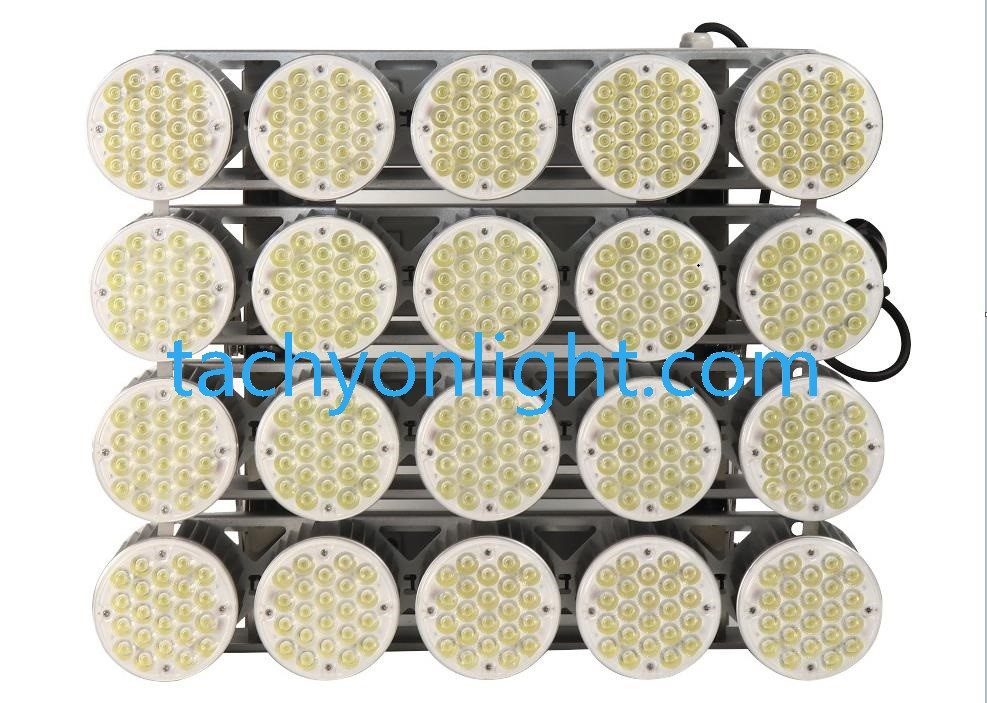What is LED Glare
Unsuitable brightness distribution in the field of view, or extreme brightness contrast in space or time, which causes visual discomfort and visual conditions that reduce the visibility of objects. Excessively high brightness or large brightness changes occur in a certain part of the field of view. Glare is one of the important causes of visual fatigue.
Glare is usually used to describe an environmental condition such as a bright sunny beach or a snow capped mountain. In 1984, the North American Institute of lighting engineering defined glare as the feeling of annoyance, discomfort, or loss of visual performance caused by illumination far greater than the eye can adapt to in the field of vision. Glare source is divided into direct, such as sunlight, too strong light, and indirect, such as from the smooth surface (highway pavement or water surface, etc.). According to the results of glare, there are three types: discomfort glare, light adaptive glare and disability glare.
Discomfort glare
Discomfort glare refers to the discomfort felt in some too bright environment, such as reading in the strong sunlight or watching high brightness TV in a dark house. When the vision of human eyes must be changed in the environment with great difference in brightness, they will feel uncomfortable. This uncomfortable condition can cause an evasive movement of the eye, resulting in loss of vision.
In the sultry and humid dusk in Louisiana, the United States, a large truck travelling from west to East broke down and stopped on the side of the road. As night fell, it was difficult for other vehicles to see the black truck. So a kind driver who happened to pass by turned on the headlight to warn the truck of the online vehicle. At this time, a small driver driving a scratched windshield The car was coming into the truck from west to East. The headlight beam scattered through the windshield disturbed the driver’s vision. As a result, he became a victim of the traffic accident before he saw the truck.
In our daily life, we can adjust some environmental factors to keep the brightness of all kinds of light in the field of vision consistent, in order to reduce the impact of glare on us. For example, when you watch TV in a dark house, you can avoid discomfort glare by lighting a small lamp. The visual fatigue caused by using computers in daily life is also related to discomfort glare. Whether the brightness of the computer display screen is in harmony with the light of the surrounding environment is very important.
For example, when the display screen is placed in front of a bright window, the eye will feel glare around the display screen, and then readjusting the position of the display screen or installing curtains can solve the problem; on the contrary, If the ambient light is too dark, users will also feel glare from the screen and produce afterimage effect, resulting in eye fatigue and blurred vision. If the glare is caused by the reflection from a smooth surface, the reflection is special. Most of the reflection is polarized light, that is, the light is limited to vibrate in a plane. At this time, ordinary filters do not work, only polarized glasses can eliminate the glare.
Light Adaptive Glare
Another type of glare is called light adaptive glare, which refers to the phenomenon that the binocular vision declines when people walk from a dark cinema (or underground tunnel) into the sun. The main reason is that the strong glare source forms a central dark spot on the retina of the human eye, causing long-term blurred vision. When some people suffer from fundus diseases (especially maculopathy), the response to glare will be more severe because of the impairment of the light sensing cells in the retina.
Disability Glare
The last type of glare is called disabling glare.
Paralytic glare refers to the phenomenon that the contrast of retina image of human eye decreases due to the disordered glare source around, which leads to the difficulty of image interpretation of brain. It is similar to the performance of the image quality degradation caused by the interference of the projector projection on the wall by the nearby strong light.
There are many eye factors that can cause disability type glare, the most common is the elderly cataract patients, when the eye lens begins to appear point opacity, the light into the eye will be scattered, so that patients feel blurred vision (because dot opacity is often composed of tiny particles, the scattered light is mainly short wavelength light, such as blue light); in addition, with the increase of age, the scattered light is mainly of short wavelength, such as blue light Long, the ability of the human eye lens to absorb and process ultraviolet light will also be reduced, resulting in some stray light can produce loss of energy glare, affecting the quality of retinal imaging (the crystal after absorbing 310-410nm ultraviolet light, excitation wavelength of 530nm stray light); the light is composed of visible light and invisible light, and the invisible light includes ultraviolet light and infrared light, so it should be divided clinically The type of glare light source and the causes of glare are used to prevent glare.
With a special lens spectral transmittance measurement instrument (such as TM-1 TOPCON company), it can measure the transmittance of different wavelengths of light passing through the lens, so as to understand the anti glare function of the lens. If the glare is formed by ordinary light source, it can be equipped with some filter lens which can filter out the specific short wave length light to maintain the quality of the retinal image. Because this kind of lens can eliminate the redundant scattered light, it can increase the contrast sensitivity and make people feel clearer.
But at the same time, it should be noted that this kind of lens will also bring some interference and disorder to the color sense of the wearer. If it is suspected that the cause of disability type glare is that the ability of human lens to absorb and deal with ultraviolet light is reduced, it is necessary to wear glasses that can filter out the ultraviolet light below 400nm to solve this problem, in daily life, such as glare caused by reflected light on highway pavement, snow and sand beach, polarized glasses can be used to eliminate fatigue and enhance vision.
The Dangers of Glare
- The glare of street lights will make our eyes feel very uncomfortable, and our eyes are more fatigued. The greater harm is still from the perspective of traffic, because under the influence of glare, people’s sight will be greatly affected, and they will be unable to open their eyes or see the surrounding things, which brings great Traffic safety hazards. Imagine that the driver is affected by the glare of the street lights and cannot see the road conditions clearly, and the pedestrians cannot see the passing vehicles. That would be a very dangerous situatio.
- The harm of indoor lighting glare. The degree of glare is affected by space and time. Glare will reduce visual function, cause eye fatigue, and distract attention; glare is not conducive to meticulous and complicated work. A longer working time will make the eyes feel uncomfortable, irritable and unresponsive, thereby reducing labor productivity, causing occupational diseases and work accident.
How to Reduce the Glare of LED Light
The cause of LED glare, firstly, the LED emits light in one direction, and the light-emitting angle is about 120 degrees. In this way, the strong light emitted by the LED is irradiated in the same direction, resulting in excessive local light and glare. Is there a way to solve this problem? At present, many lighting companies have recognized this problem, but have begun to improve, roughly there are the following solutions.
First of all, the solution adopted by LED light tubes and panel lights is to add an acrylic cover with a frosted surface to hide the light source and eliminate glare, but the light loss is extremely large.
Second, the scheme adopted by industrial and mining lamps and floodlights is sandblasting on the reflector to improve the glare, but it is also achieved by sacrificing the light output rate.
Third, simply connect the lighting panel, without direct light, secondary reflection. This solution is the most perfect, but if the reflectivity of the reflective layer is not high, the light loss of the lamp is also considerable.
Fourth, the use of nano high diffuse reflection reflective coating to make the light not unidirectionally reflected in one direction, but scattered around, the diffuse reflectance is as high as 94%, so that the unidirectional light emitted by the LED becomes uniform scatter around. The glare problem is resolved immediately.
How to control glare in interior lighting design
The main causes of glare in indoor lighting:
- Glare is caused by the brightness distribution in optics, the brightness range and the extreme contrast of brightness.
- Glare in indoor spaces such as exhibition halls, art galleries, gymnasiums, etc. will reduce the use value of the space. Therefore, measures must be taken to control glare in natural lighting and artificial lighting design.
- Direct glare The glare caused by the luminous body that exists in the same direction as the viewing object is called direct glare. When the brightness of the sun, luminous ceiling or small lamps in the field of view is too high, glare will be produced. Direct glare severely reduces visual performance. Indirect glare When the luminous body is not in the same direction as the viewing object, the glare caused by the luminous body is called indirect glare. Indirect glare has little effect on vision.

Before discussing the problem of glare treatment in interior lighting design, we must first understand the related issues of interior lighting:
- Indoor lighting is an important part of indoor environment design. Indoor lighting design should be conducive to safe and comfortable life for people’s activities. In people’s lives, light is not only a condition for indoor lighting, but also a basic element for expressing spatial form and creating an environmental atmosphere.
- The relationship between light and space. Gunnar Berkelitz said: “Without light, there is no space.” The role of light is extremely important to human visual functions. Indoor natural light or lighting design should meet the needs of people’s various activities in function, and also pay attention to the lighting effect of the space.
- The indoor home lighting design should effectively hide the lamp, which is the ultimate solution to prevent glare.




